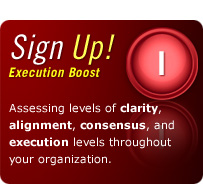STEAM Tip: Time Perception
December 23rd, 2009
If there are any goals that you are struggling to complete on time or at high levels of quality, you may benefit from thinking about how much time you believe that you have for completing activities that can help you to achieve these goals. If you do not perceive enough time to achieve a certain goal, you may wish to think about how to set the goal in a way that is more sensitive to your time constraints. Here are some ways in which to do so.
- Be flexible with activity duration. Sometimes, we can get caught up in “all-or-none” thinking, where we decide that if we do not have time for the entire activity, then it is not worth doing the activity (or portions of the activity) at all. This can impeded progress greatly; spending 15 minutes a day on an activity adds up to 5,475 minutes a year (or, about 90 hours per year). In other words, dedicating even 15 minutes per day to something can result in spending around two work weeks’ worth of time (i.e., 8-9 hour days, five days a week) on the activity per year! With this in mind, you can goal-set to be more flexible with your activity duration. For example, the goal “Talk with John for one hour a week,” could be changed to a goal like this if you are struggling to find a full 60 minutes on a weekly basis: “Talk with John for between 15-60 minutes per week depending on my time constraints.” This way, you will be more likely to be able to achieve the goal of a weekly phone meeting even if you only have 15 minutes instead of the normal 60 minutes during a given week.
- Be flexible with activity frequency. The all-or-none mindset mentioned above can also apply to activity frequency. For example, if the weekly call to John discussed in the previous paragraph cannot happen, some may decide that they just do not have the time for regular phone calls with John. Of course, this is not true; not having time every week for something does not necessarily mean that the activity cannot happen regularly on a bi-weekly, monthly, or quarterly basis. If you are flexible with your activity frequency, you can decide to goal-set in a way that affirms this by replacing a goal like this one: “Talk with John for between 15-60 minutes per week depending on my time constraints,” to a goal like this if you are struggling to find time for a call on a weekly basis: “Talk with John for between 15-60 minutes 1-4 times per month depending on my time constraints.”
- Be an “effective waiter” (if possible, perform portions of the activity while waiting for something). Most of us have to wait for a certain amount of time every week (and, if you are like me, you do not like to wait in lines and/or on the phone — or even for commercials to end for a favorite show or sporting event to resume). “Effective waiters” are those who expand their time perception by using their wait times to move a step closer to the accomplishment of goals. You can become a more effective waiter by goal-setting in a way that reminds you to use your waiting times to move closer to the achievement of your goals by replacing goals like this one: “Talk with John for between 15-60 minutes 1-4 times per month depending on my time constraints,” to a goal like this: “Talk with John for between 15-60 minutes 1-4 times per month depending on my time constraints (during times when I am waiting for something when necessary).” Of course, many times we wait for things for shorter durations than 15-60 minutes (e.g., 2-3 minutes waiting for commercials to end or to talk to a representative from a company we are calling). Effective waiters can even use this time via goals like this one: “Read 1-2 paragraphs of that book I’ve been meaning to read during all commercial breaks during my favorite show/sporting event.” You may think that this amount of time won’t result in much progress, but remember this stat when in doubt: five 3-minute commercial breaks during a 1-2 hour show result in 15 minutes per day (and, as stated above, 15 minutes per day results in about two work weeks’ worth of time on an activity at the end of a given year). You may wish to make an “effective waiter” list (a list of activities that can be done in 2-3 minute segments) to remind yourself of all of the small but useful things that you can do when you are forced to wait for something.
- Allocate your time based on priorities and values. Sometimes, we can perceive no time for certain important activities because we are spending too much time on less important activities. We can minimize the risk of spending too much time on less important things by (a) clarifying what is most important (e.g., family, career, friends, health, community), what is less important (certain phone calls, certain projects, certain parties), and what is not at all important (e.g., complaining without action, excessive worrying, wishing that others were different) and (b) setting goals that remind us to live our values like this: “Review what is most important to me weekly and make sure that I spend most of my time on activities associated with my objectives and values.” (NOTE: For those who have completed Phase I of the STEAM Training Manual, you can do this by reviewing the activity categories in the “Living Your Priorities” exercise weekly and thinking about how strongly any new activity is aligned with your most important objectives in life. If the new activity is more powerfully aligned with your objectives in life than some of the activities that you currently spend time on, you can decrease time spent on these activities to open up more time for the new activity [spending even three fewer minutes on five less important activities will get you to the 15 minutes per day — and around two work weeks’ worth of time per year — discussed above]. If the new activity is not very strongly aligned with your most important objectives in life, you may wish to avoid committing to it or committing to engaging in the new activity when waiting for something — as an “effective waiter” would do, as mentioned above — and/or when there is not much else that needs to be done.)
FINAL NOTE: If you were linked to this article by a video or email, please return to that link and proceed with any other instructions that you deem helpful. If you are using the Mission Fulfillment System to identify and track goal achievement, please keep this article in mind when you develop and/or modify your goals on the system. For more articles related to improving STEAM, see our Self-Mastery, Interpersonal Expertise, and Mission Connection tips.
Article Filed under: 2. Time Perception Tips



5 Comments Add your own
1. Excellence Tree Journal &&hellip | February 24th, 2010 at 4:57 pm
[…] Perception of enough time to do what we wish to do. We tend to only attempt to do what we believe we have time to do – and find all kinds of ways to avoid what we do not think we will have time to do. Ironically, many people report that they often find between 20-40 hours every week that they could have used to do more of what they wanted to do. Clearly, perception of time availability is not always reality. We normally have much more time than we perceive to do what we wish – if we are willing to stop doing certain things we do not want to do as much! Doing fewer less important things increases our time perception – and doing levels go up as our perception of time increases. Click here for ideas on how to increase time perception. […]
2. Brandon | August 5th, 2014 at 1:43 pm
Negative self-talk was the downfall of my late freshmen year in college due to its affect on my perception of time. I would always think to myself “you’ll never get that done,” “you don’t have time to relax,” “I need to get this done right now!” These thoughts stressed me out and eventually I was spending a large chunk of my time stressing about time; this important topic is also discussed in the following article: (http://www.excellenceuniversity.net/journal/625/self-mastery-tip-cultivate-your-peace-of-mind).
One way I overcame this problem was by creating a list of objectives before going to bed that I needed to complete the next day. By doing this I knew exactly what I had to get done when I woke up and actually helped me wake up by creating a sense of urgency. However, this list needed to have certain qualities in order for it to be effective. First, I couldn’t include too much on it; I only put as many tasks as I thought I could reasonably accomplish within a day, all the other objectives I had on my mind went on a separate list that would most likely be included for the next day. After having a reasonable number of tasks on my list I then asked myself if they were truly important; if they were I kept them on the list and if they weren’t I took them off. Next, I would decide which ones I would enjoy doing the most and the least, I would organize them so that one I wouldn’t enjoy would be followed by one that I would enjoy in order to keep myself highly motivated; for more ways to enhance enjoyment check out the following article: (http://www.excellenceuniversity.net/journal/451/execution-tip-think-about-your-enjoyment-levels).
Finally, I broke them down into smaller tasks that I could complete in a short amount of time and after completing several smaller tasks I would reward myself in some way. This method has truly helped with my time management and as a result my stress decreased and my self-efficacy increased. For more tips on how to increase your execution excellence check out the following Facebook page: https://www.facebook.com/WelcomeToExcellenceUniversity?ref=hl&ref_type=bookmark
3. Rachel S. | March 30th, 2015 at 5:45 pm
Time-perception and time-management are critical to meeting goals. When estimating how much time I have to meet deadlines, I often overestimate how long it may take for me to complete a task. When I do this, I not only attempt to account for unexpected complications that may arise, but if I move swiftly through my proximal goals, I can maybe even move on and get more accomplished than intended. This tends to leave me with a positive feeling and increased motivation.
Proper time-perception can also assist in proper time-management. It’s terribly hard to manage your time properly if you don’t even know how long tasks will take. For instance, if a student spends more time than they expected on one homework task, that may put others in a time-crunch, making them less enjoyable and possibly not as successful.
4. Aliye Karakoyun | April 7th, 2015 at 11:45 pm
This article is related with “Time Perception” which is the “T” in STEAM. I presume that all of you have experienced the gnashing feeling of stress, pressure, and the heavy weight of procrastination, because lets face it, this is college and life is difficult to handle with many responsibilities regarding your future. But as I have read in this article, there are ways to handle such stress and that is to manage the time that you leave to do assignments that are important. The article touches upon the completion of a task in a timely manner and to be satisfied with the product completion, and if there is an issue with arranging time then be aware of what your priorities are in your life and arrange your goals in a timely fashion. For example, something we can all do is to decrease the amount of time we watch TV, surf the web, and check our social media accounts because of the time constraint we have. Also another useful tip that we can utilize is to keep an agenda. Know when everything is due, arrange your schedule based on the agenda, and make a list before you go to bed of all the things that you need to do tomorrow.
5. Martin Heesacker | January 13th, 2016 at 4:01 pm
The last major point, about allocating your time consistent with your priorities, is really gold, in my experience. Armand Hammer, the famous industrialist (think baking soda) said the key to his success was figuring out the most important thing to do right then, and doing it. That approach is the opposite of “I don’t have time.” I have time for what’s important and I don’t have time for what isn’t. This also means you need to get comfortable with not doing everything and especially with not doing the things that used to keep you from doing the most important things to you. Said in a different way, the key to having enough time is knowing and living your priorities.
Lots of personality theorists touch on issues related to these ideas. For example, Karen Horney’s “tyranny of the shoulds” keeps people unclear about their own priorities. Also, Carl Rogers’ notion of congruence is another way of saying one is living one’s priorities. From a behaviorist perspective, living your priorities is more reinforcing than acting without paying attention to your priorities.
Trackback this post | Subscribe to comments RSS Feed
Leave a Comment
Some HTML allowed:
<a href="" title=""> <abbr title=""> <acronym title=""> <b> <blockquote cite=""> <cite> <code> <del datetime=""> <em> <i> <q cite=""> <s> <strike> <strong>